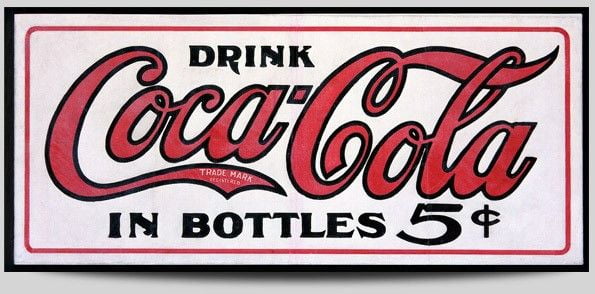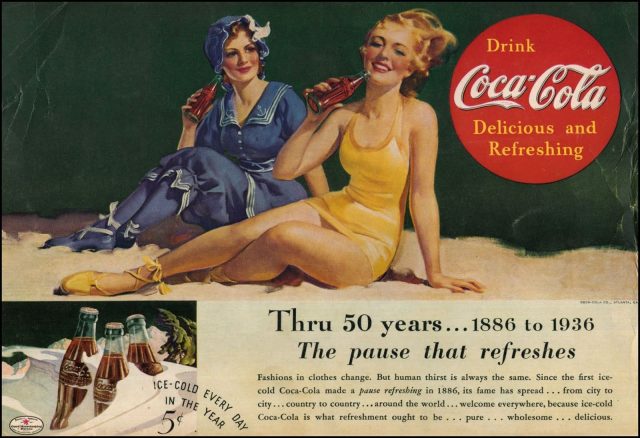Disclaimer: Originally published in November 2017. It is being republished since it still remains an interesting topic till today.
Demystifier: An ED Original where we take a complex topic but the content is written in such a way that it is knowledgeable and easy to comprehend at the same time.
If you have ever sat through a high school economics class, you’ll recall a basic characteristic of economics — prices change. Whether the costs of a newer iPhone goes up by $50 or the gas prices get cut by $0.02, prices fluctuate over time. That’s how economies work.
And then there is The Coca-Cola Company.
SEE MORE: Our World Would End If Starbucks Disappeared
In 1886, 200 ml of Coke cost a nickel, 5¢. That is what it cost in 1890, and 1900, and 1910, and 1915, and 1920. You get where I am going with this. Coke battled with hundreds of competitors, pulled through the Great Depression of the 30s, and lived through 3 wars — all the while selling the world’s favorite carbonated beverage for just 5¢.
In fact, one could still walk down to a store and buy a Coke for a nickel, 70 years after its inception! The Coca-Cola Company finally raised the price of their beloved product in 1959, 73 years after its original launch.

While it might not seem like a big deal to you (things were supposed to be cheaper back then, right?), it certainly piqued the interest of Daniel Levy, an economist who vowed to decipher this strange anomaly he stumbled upon while taking a tour of the Coca-Cola Museum in Atlanta, Georgia.
SEE MORE: Korean Movies Are Making The World A Better Place
Why did The Coca-Cola company do that?
In 1899, two lawyers met with the then president of The Coca-Cola Company, Asa Candler. They pitched him a crazy idea — selling Coke in bottles! They were interested in buying the bottling rights for the beverage. You have to keep in mind that back in 1899, bottled beverages were unheard of. Coke was sold at soda fountains.
The president, thinking that the idea was absurd and would never amount to anything, agreed to sell them the syrup. Here is the caveat — at a fixed price of $0.92/gallon. Forever.
That’s right. The deal had no expiration date.

Soon the bottled idea took off and now The Coca-Cola Company was in a bind. Old school soda fountains were being phased out by small mom-and-pop shops. The bottling company or the shops could raise the retail prices at will but Coke wouldn’t even see a penny off those profits.
SEE MORE: Why I Never Finish Anything And How I Changed That
So how could they control the retail costs? Advertisements!
The company blanketed the whole country with exceptional and extensive advertising, prominently featuring 5 cents, the central theme of the marketing campaign. A variety of billboards and posters all across the country were raised which successfully drilled their campaigning idea — Anybody could afford America’s favorite beverage, it’s only a nickel after all.
Coke was now a household name, and why wouldn’t it be? The consumers got accustomed to the old nickel-for-coke for better or for worse. Their relentless advertisement efficaciously kept the retail prices in check and their profits blooming.

This strategy kept them afloat for years to come and then a new contract was eventually negotiated with the bottling company in 1921.
SEE MORE: The Dummies Guide To Password Security
All good things must come to an end. What really brought about the demise of the beloved nickel-Coke was inflation. The price of the core ingredients kept on increasing and it was no longer feasible to coast by based solely on sales volume.
The Company ultimately started rolling out 6 cents and 7 cents pricing as they nonchalantly moved away from the nickel advertisements. In 1959, the last batch of the 5¢ Coke was subsequently sold off, marking an end to nothing short of a legendary run that defied root economics.
SEE MORE: 5 Movies That Gave Us All An Existential Crisis
It can be argued that Coke is what it is today because of that old, rusty, and haphazardly signed contract. The Coca-Cola Company was able to monopolize rapidly because of its easy affordability.
It is said that Coca-Cola is the second-most well-known phrase in the world. There certainly is truth in that. Quite a remarkable journey for a beverage coming out of a humble pharmacy from Atlanta in 1886.
NOW WATCH: Smart City – The Next Big Thing That Is Keeping Bill Gates Busy
Image Credits: Google Images
Sources: NPR
Disclaimer: We do not hold any right, copyright over any of the images used, these have been taken from Google. In case of credits or removal, the owner may kindly mail us.
Related Posts:
- Forget YouTube, Think Podcasts: You’ll Love Them!
- 7 Insane (But True) Things About Elon Musk
- Watch: Follow Bill Gates’ 5-Hour-Rule And Become Successful





























